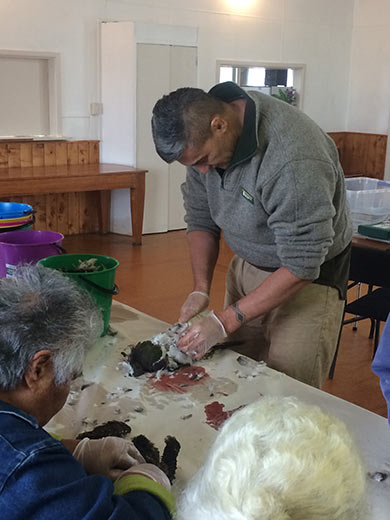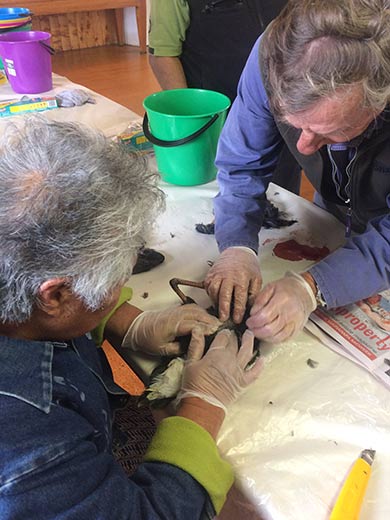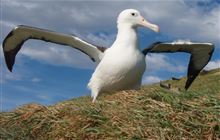Bones and feathers bring people together
Archived content: This media release was accurate on the date of publication.
Introduction
The traditional method of preparing albatross bones for tattooing chisels is bringing together two iwi and Department of Conservation staff in a wānanga on Matiu/Somes Island today.Date: 01 December 2017
The traditional method of preparing albatross bones for tattooing chisels is bringing together two iwi and DOC staff in a wānanga on Matiu/Somes Island today.
Most native birds are fully protected, and deceased birds are often handed in to DOC offices around the country. DOC stores these birds on behalf of iwi to use for traditional purposes, as outlined in the Wildlife Act.
Wairarapa DOC Ranger Bart Cox says native birds used to be abundant and were used by iwi in daily life.
"Native birds are not as plentiful these days, and most species are protected, so traditional practices are now difficult to maintain. The birds that are handed in to DOC are a great opportunity for iwi to use their traditional materials in modern times."
The first steps of the ope (travelling group) to Matiu/Somes began in back in June with a wānanga on preparing deceased native birds for traditional purposes at Hurunui-o-Rangi Marae in the Wairarapa.
Ngāti Kahungunu whānau worked with DOC staff at the marae to process birds such as kererū, pūkeko, kahu, tūī and koekoeā (long-tailed cuckoo) for the feathered pelts to be used in traditional weaving.
A highlight of the wānanga was DOC Pou Tairangahau (cultural manager) Carl Baker demonstrating how to remove albatross wing bones that can be used for making uhi matarau (tattooing chisels), kōauau (flutes) and fastenings for korowai (cloaks).

Carl Baker, Pou Tairangahau Lower North Island, works on a kererū
Image: DOC

Members of the ope (travelling group) work together to process a pūkeko
Image: DOC
Traditionally the albatross bones are prepared for working by placing them in a kete (woven bag) and soaking them in the sea for the salt water, waves and creatures to clean them up.
"We needed a safe place to put the bones in the sea," says Bart.
"We approached Te Atiawa of Matiu/Somes Island to use their sheltered waters for soaking the bones, and they welcomed the opportunity."
"Everyone in the ope is excited as we are doing something special with the bones and renewing traditional links between Ngāti Kahunugnu and Te Atiawa on Matiu-Somes Island. It's great work for DOC to be involved with."
Contact
Jim Flack, DOC Community Ranger
Mobile: +64 27 5689 246
Email: jflack@doc.govt.nz


